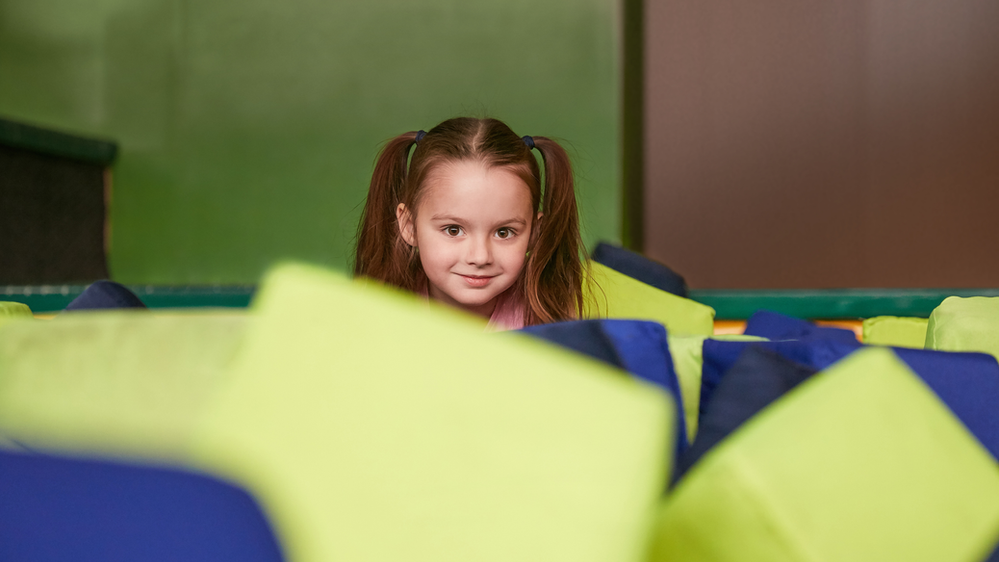
If you think back on some of your most memorable times with children, either as a parent of your own children or as a teacher in the classroom, you can probably remember the times when a child touched your heart, or when they discovered something that struck you deeply, or maybe even when their sadness evoked your own. We remember deep and powerful emotions from the children, recognizing that their spirits have not yet grown the thick skins of self-protection that ours have, seeing our own vulnerabilities in the expressions of hope and innocence they so generously offer.
But “mad with joy?” How often do we remember the joyfulness of children? Not just their profound comments or their excitement at a new adventure, but their joy? For most of us, it takes a moment to think of a time when the children offered us pure joy. We can do it, but it’s not necessarily at our fingertips.
We have been conditioned to look for the problems: when is a child sad? When are they angry? What are they frustrated by? What confounds them? And so these are the images that often stick in our memories, the times when we were able to help a child to move through a challenging time or when we were companions to them during an experience of sorrow. We are conditioned to be alert to what might go wrong, so that we can prevent or intervene or react to it in a way that resolves it quickly.
We so often forget to notice joy.
Why do we forget about joy?
In our own lives, we often value less the things that make us happy, focusing more of our attention and time on the prevention of sadness than on the celebration of joy. And yet, we know we get more of the things in which we invest. If we invest most of our energies into problem-solving, maybe we are perpetuating a focus on problems. If we invest most of our energies Into problem-solving, maybe we end up looking for problems to solve. We, perhaps unintentionally, make ourselves more necessary by appointing ourselves as fixers and, in doing so, steal from ourselves and the children the ability to slow down and appreciate the moments of joy.
It may not be that the children are not showing us their joy as often. It may be that we don’t stop to notice.
Try this: for one week, just one week, make note, of every time you see a child in your care demonstrate joy. Maybe you’ll make an actual note, writing it down as you see it. Maybe you can take a moment to assess at the end of the day when you were witness to their joy.
When we look for joy in the children, even brief glimpses that let us see what strikes their spirits, we will see it more often. When we look for their joy, we may find that it doesn’t always happen in loud ways. Sometimes joy is expressed very quietly, in a child’s reflection upon their work or the satisfaction of a particular curiosity. Sometimes it’s shared between children. Sometimes it’s shared between children and adults. When we seek it out, we may have to look more closely to notice it.
When we look for joy in the children, we are likely not only to see it more often but to see problems less distinctly. Bearing witness to the moments when our children are joyful, when their spirits are engaged and connected, is a privilege of adulthood. For the children, joy is a natural condition, inspired by the seemingly simplest of experiences. Only as adults are we able to observe joy as a phenomenon worth noticing. Because we appreciate its influence differently, we see its complexity when we witness it. We know that there is joy and the absence of joy, that these can exist in the same life, in the same day, in the same moment. Bearing witness to when children are joyful, we are able to place the seeming conflicts of children’s lives in their proper place, pushing them away from center stage and elevating instead those things that inspire children’s spirits. Everyone has conflicts: a work that’s frustrating or a personality that rubs us the same way. The sorts of things that frustrate children are easy to generalize. The sorts of things that inspire them are wholly individual. A child who is sublimated at the sight of a moth, or another whose joy is evident watching their younger sibling sleep, the child who delights in the arrival of the daily mail or the one who cannot stop laughing if you say, “Peas, please” out loud. Watching for children’s joy reminds us of what is singular and irreplaceable in each child, each child. It preserves for them a focus on the good. It protects them from our focus on what we want to change. And, as it turns out, it inspires quite a good bit of joy in us as well. Bear witness.
*A response to Chapter 7, Part Two : The Exercises The Discovery of the Child. M. Montessori
